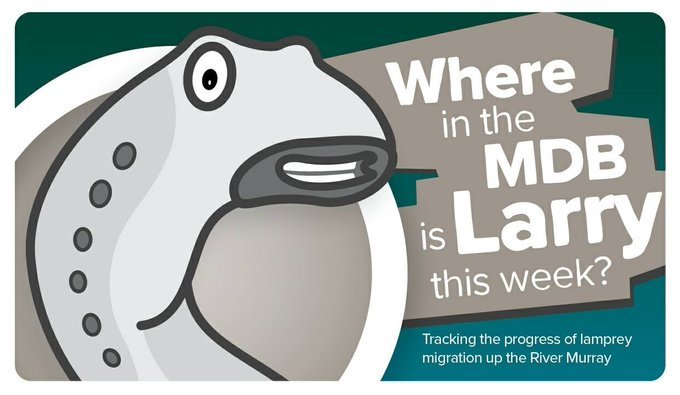
Your guide to the toothy, eel-like creatures found in the River Murray – and why they’re increasing
It’s probably not a face you’d like to wake up next to in the morning, but these eel-like creatures are a fascinating part of our River Murray ecosystem.
Lamprey are a primitive fish that migrate between the ocean and the River Murray to complete their lifecycle.
Researchers have told us that 2020 has been a great year for lamprey migration from the sea through the Murray Mouth.
So this year we’re tracking them up river as they migrate to breed so we can find out more about this unique (looking!) creature.
What are lamprey?
Lamprey are an ancient, native, eel-like fish that can migrate up to 2000 km between the ocean and the River Murray to breed.
Record numbers of lamprey have been recorded migrating from the Southern Ocean to the River Murray this year in search of calmer waters to breed.
So far this year, a record 101 pouched lamprey and three short-headed lamprey have been found swimming through the Lower Murray barrages. The previous record was 61 in winter 2019.

Tracking their movement
Lamprey have been caught at various barrage fishways near Goolwa and tagged so they can now be tracked as they move through consecutive fishways at upstream locks along the River Murray.
The exact location of their spawning grounds in the Murray-Darling Basin is still a mystery, but through this tagging process, scientists are gathering more information on their movement patterns through the use of microchips (PIT tags).
You can now follow their journey along the Murray via our new ‘Where in the MDB is Larry the Lamprey’ page.
As the lamprey move through fishways, the microchips are helping us learn more about their movement and solve the mystery of where they spawn.
This knowledge will help inform how the river is managed so that we can better support the recovery of the species.
Each week we’ll be updating the map to show where the tagged fish are in the MDB system so you can feel part of their amazing journey.
The leading lampreys have been tracked past Mildura and we’ll continue to follow their journey over the next month.

Why is connectivity important?
On 24 October we celebrate World Fish Migration Day – a timely reminder of the ecological importance of rivers flowing from source to sea.
The ocean and the Murray must stay connected for lamprey to enter the freshwater system and complete their lifecycle.
Water for the environment has been a crucial factor in improving this connectivity, and is largely responsible for driving this increase in lamprey numbers in the Murray-Darling Basin.
During the Millennium drought, there were no freshwater flows to the ocean from the River Murray at the Lower Murray barrages for almost three years and no connectivity between salt and fresh environments.
As a result, scientists were alarmed by a lack of winter lamprey migration, and there were grave concerns for the future of the species in the Murray-Darling Basin.
Thankfully, we’re seeing the results of water managers from across government agencies working together to get conditions just right to support native fish like lamprey.
This September actually marks 10 years of continuous flows from the River Murray to the Coorong and Murray Mouth estuary – thanks largely to the recovery of water for the environment.
Want a more in-depth explanation of water for the environment? Check outour storyfor everything you need to know.





